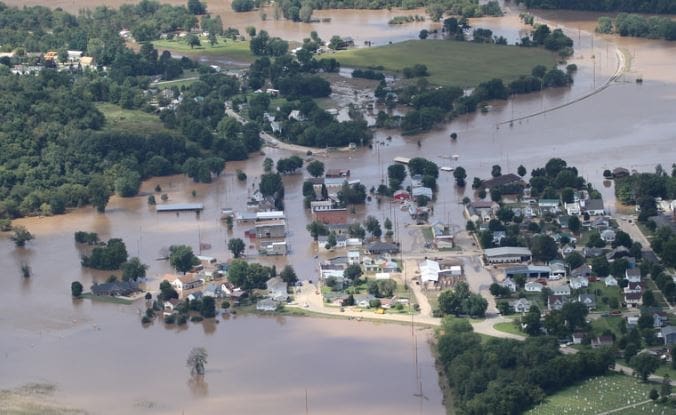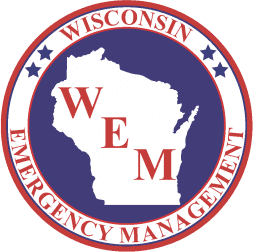
MADISON, Wis. – As the days warm and become longer, spring also brings plenty of melting snow, rainfall, and ice jams. This can bring flooding to Wisconsin communities.
To encourage everyone in the state to be prepared, Gov. Tony Evers has declared March 6 – March 10 as Flood Safety Awareness Week in Wisconsin. ReadyWisconsin wants everyone to take this week to assess their flood risk and learn how to protect themselves before, during, and after a flood.
“Flooding from melting snow or heavy rain is one of the most common and most costly natural hazards in Wisconsin,” said Wisconsin Emergency Management Administrator Greg Engle. “It’s important for people to take action now to mitigate flooding risks to protect the life they have built and create a legacy of flood resilience for their family and community.”
While you can’t always stop waters from rising, the following tips can help improve safety for you and your community before a flood:
- Know your flood risk. Assess the potential for flooding on your property if you live in a flood plain, near a body of water, or have a basement. Plan with your family for what you will do if the floodwaters begin to rise.
- Consider flood insurance. Most homeowner, rental, and business insurance policies generally do not cover flooding. Don’t wait until it’s too late. Most flood coverage requires 30 days to take effect after application and payment. Find more information about flood insurance options at https://www.floodsmart.gov/.
- Build a “Go Kit.” Include items such as food, water, cash, and medications. Have copies of important documents (personal identification like passports and birth certificates, medical records, insurance policies, and financial documents) in a waterproof container.
- Make an emergency plan — If you can’t make it home or need to leave quickly, identify a meeting place for your family. Make a list of emergency numbers and important contacts.
- Keep water out of and away from your house. Clean gutters regularly, direct downspouts away from your foundation, repair cracks in your foundation, improve grading so water flows away from your house, and cover window wells.
- Move valuables out of the basement. Elevate or flood-proof your washer, dryer, water heater, and HVAC systems. Relocate electrical outlets to three feet above the floor.
Follow these tips during and after a flood:
- Stay up to date on the forecast. Identify multiple ways to receive alerts about dangerous weather conditions and potential flooding, such as a NOAA Weather Radio, trusted local news outlets, and mobile weather apps.
- Never drive or walk through flooded areas — turn around, don’t drown! Just six inches of fast-moving water can sweep adults off their feet, while 12 inches can carry away a small car. Be especially careful while driving at night.
- Take steps to protect your health:
- Stay out of floodwaters, which can contain bacteria from human and animal waste, sharp objects, hazardous chemicals, downed power lines, and other dangerous items.
- If your home floods, follow cleaning and disinfection guidelines to avoid mold growth.
- If the power goes out for more than four hours, throw out refrigerated food or any food that came into contact with floodwater.
- If your drinking water well is flooded, disinfect the well and test the water to make sure it’s safe before drinking it.
- If you use a generator, keep it outside at least 20 feet from your home to avoid illness or death from carbon monoxide, which can occur in enclosed spaces.
For more information on flood safety, and for safety information throughout the year, go to http://readywisconsin.wi.gov. You can also follow ReadyWisconsin on Facebook (https://facebook.com/ReadyWisconsin), Instagram (http://instagram.com/readywisconsin), and Twitter (https://twitter.com/ReadyWisconsin).

